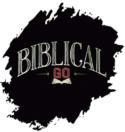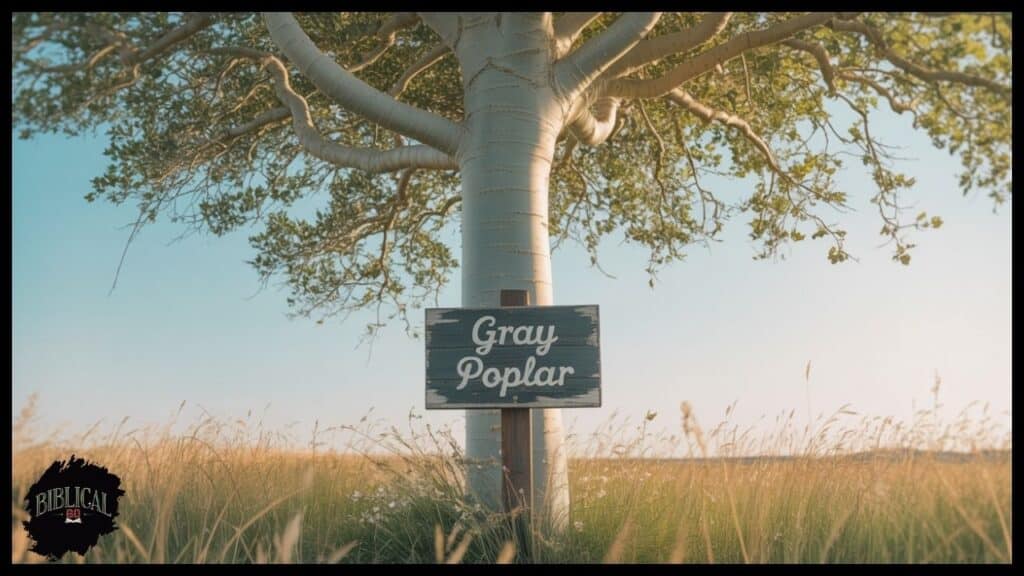Mastering Dropshipping Gray Poplar: The dropshipping landscape has exploded with new players, but few have generated as much buzz as Gray Poplar. While most sellers jump headfirst into partnerships without understanding what they’re getting into, smart entrepreneurs dig deeper.
Gray Poplar promises to revolutionize your e-commerce journey with their comprehensive fulfillment partner services. But does reality match the marketing hype? This guide cuts through the noise to deliver the unvarnished truth about dropshipping Gray Poplar.
Whether you’re launching your first online store or scaling an existing operation, understanding Gray Poplar’s actual capabilities versus their promises could make or break your business. Let’s dive into what really matters.
Why Gray Poplar Changes Everything
Digital entrepreneurship isn’t just about finding products anymore it’s about finding the right partners who won’t sabotage your growth. Gray Poplar emerged from China’s logistics powerhouse with bold claims about transforming dropshipping.
Their Shenzhen operation gives them access to manufacturing networks that smaller agents can’t touch. This translates to better product sourcing opportunities and potentially lower costs for serious sellers.
But here’s what they don’t advertise: Gray Poplar isn’t suitable for every seller. Casual hobbyists looking to make quick cash will find their requirements too demanding. However, entrepreneurs committed to building sustainable online businesses discover genuine advantages.
The key difference? Gray Poplar focuses on quality control and custom branding rather than just moving products cheaply. This approach appeals to sellers who understand that long-term success requires more than rock-bottom prices.
Gray Poplar Decoded: Beyond the Marketing Hype
Gray Poplar operates as a comprehensive sourcing agent and fulfillment partner based in Shenzhen, China. Unlike dropshipping platforms that simply connect you to existing suppliers, Gray Poplar maintains direct relationships with manufacturers.
What They Actually Do
| Service Category | Gray Poplar Offering | Reality Check |
|---|---|---|
| Product Sourcing | Access to 10,000+ suppliers | Mix of direct factory connections and middlemen |
| Quality Control | Pre-shipment inspection | Basic visual checks, not comprehensive testing |
| Custom Branding | Private label options | Available but with high MOQs |
| Shipping | Global shipping partnerships | Limited to major carriers like DHL, FedEx |
Their competitive edge lies in inventory management capabilities that most dropshipping services lack. Gray Poplar can hold stock in their warehouses, reducing shipping times significantly compared to traditional order fulfillment models.
How They Differ from Competitors
Gray Poplar distinguishes itself through integrated back-end operations. While platforms like Oberlo simply connect your Shopify store to suppliers, Gray Poplar manages the entire fulfillment process.
Their customer support team handles inquiries, return handling, and tracking numbers services that overwhelmed solo entrepreneurs desperately need. This comprehensive approach justifies their higher fees for sellers who value operational simplicity.
Service Breakdown: What You’re Actually Getting
Product Sourcing Reality Check
Gray Poplar’s sourcing network spans multiple product categories, but their strength varies dramatically by niche. Gadgets and home goods represent their strongest categories, with established factory relationships delivering competitive pricing.
Clothing sourcing proves more challenging due to sizing inconsistencies and quality variations across suppliers. Beauty products face regulatory hurdles that Gray Poplar handles inconsistently.
Their product catalog includes over 50,000 items, but availability fluctuates based on factory relationships and seasonal demand. Smart sellers focus on their proven categories rather than experimenting with untested niches.
Custom Product Development
Private label opportunities exist, but minimum order quantities start at 500 pieces for most products. This requirement eliminates casual sellers but creates genuine opportunities for committed entrepreneurs.
Custom packaging options include branded boxes, thank-you inserts, and product tags. However, setup fees range from $200-800 depending on complexity, making this viable only for products with healthy margins.
Fulfillment Operations Deep-Dive
Order automation integration works seamlessly with major platforms. Shopify, WooCommerce, and Amazon sellers can sync their stores directly with Gray Poplar’s system.
Processing times average 2-3 business days for standard products. Custom branding adds 5-7 days to fulfillment timelines. During peak seasons (November-January), these timelines can double.
Shipping partners include DHL, FedEx, 4PX, and YunExpress. Each carrier serves different markets optimally:
- DHL: Best for European markets (7-12 days)
- FedEx: Reliable for North America (5-10 days)
- 4PX: Cost-effective for Asia-Pacific (8-15 days)
- YunExpress: Budget option with longer transit times (15-25 days)
Quality Control: The Make-or-Break Factor
Product inspection processes vary significantly from their marketing claims. Standard inspection includes visual checks for obvious defects, packaging integrity, and basic functionality testing for electronic items.
However, comprehensive quality testing requires additional fees. Material durability testing, safety certifications, and detailed measurements cost extra often $2-5 per unit.
Quality assurance becomes critical for sellers targeting premium markets. Gray Poplar’s basic inspection catches obvious defects but won’t prevent more subtle quality issues that damage brand loyalty.
Getting Started: The Strategic Approach
Before You Contact Gray Poplar
Financial requirements aren’t advertised upfront, but expect minimum monthly order volumes of $2,000-5,000 to access their full service suite. Smaller sellers can work with Gray Poplar but receive limited support and higher per-unit costs.
Documentation requirements include business registration, tax identification numbers, and bank account verification. International sellers need additional compliance documentation depending on their target markets.
The Onboarding Process Revealed
Initial consultation calls focus on understanding your product categories, target markets, and volume projections. Gray Poplar assigns account managers based on these factors high-volume sellers get experienced representatives while smaller accounts receive junior staff.
Store integration typically takes 7-14 days for straightforward setups. Complex inventory management requirements or multi-platform integration can extend this timeline to 3-4 weeks.
Testing phases should include small order batches across your planned product range. This reveals potential quality issues, shipping problems, and communication gaps before committing to larger volumes.
Competitive Analysis: Gray Poplar vs. The Field
Cost Comparison Matrix
| Service | Gray Poplar | CJDropshipping | Spocket |
|---|---|---|---|
| Setup Fee | $200-500 | Free | Free |
| Transaction Fee | 3-5% | 2-4% | None |
| Product Sourcing | $50-200/product | Free | Free |
| Custom Branding | $200-800 setup | $100-300 | Limited |
| Monthly Minimum | $2,000-5,000 | None | $29-99 |
Gray Poplar’s higher costs reflect their comprehensive service approach. Sellers who value customer support, quality control, and order automation find the premium worthwhile.
Performance Benchmarking
Shipping speed advantages become apparent in Gray Poplar’s warehouse stock model. Products they inventory ship within 24 hours versus 3-5 days for traditional dropshipping.
Error rates average 2-3% across all orders competitive with industry standards but not exceptional. Return handling processes work smoothly, though international returns can take 3-4 weeks to resolve.
Customer service responsiveness varies by account size. Premium accounts receive same-day responses while smaller sellers often wait 24-48 hours for detailed replies.
Profit Optimization Strategies
Pricing Psychology
Successful Gray Poplar sellers focus on value-added positioning rather than competing solely on price. Their higher service costs eliminate razor-thin margin strategies that work with cheaper suppliers.
Product markup strategies should target 3-5x wholesale costs to absorb Gray Poplar’s fees while maintaining profitability. This pricing level requires strong front-end marketing and superior customer engagement.
Operational Efficiency
Order flow automation reduces manual processing time significantly. Properly configured systems handle 90% of routine orders without intervention, freeing entrepreneurs to focus on growth activities.
Customer support templates for common inquiries streamline communication. Gray Poplar provides basic templates, but customizing these for your brand voice improves customer reviews and satisfaction.
Crisis management protocols become essential when dealing with international suppliers. Having backup plans for shipping delays, quality issues, and communication breakdowns prevents small problems from becoming business disasters.
Risk Management: What Could Go Wrong
Supply Chain Vulnerabilities
Single supplier dependency represents the biggest risk for dropshipping Gray Poplar sellers. Economic disruptions, factory closures, or relationship breakdowns can halt entire product lines overnight.
Risk mitigation strategies include diversifying across multiple product categories and maintaining relationships with alternative suppliers for critical items.
Geopolitical factors affecting China-based operations include trade tensions, shipping restrictions, and regulatory changes. Sellers targeting sensitive markets should monitor these developments closely.
Currency fluctuation impacts become significant for high-volume sellers. Gray Poplar prices in USD, but underlying costs fluctuate with Chinese yuan movements.
Legal and Compliance Issues
Import regulations vary dramatically across markets. Gray Poplar handles basic customs documentation, but sellers remain responsible for compliance with local regulations.
Product liability considerations increase with custom branding. When you put your brand on products, you assume greater legal responsibility for defects or safety issues.
Intellectual property protection varies by product category. Gray Poplar can’t guarantee that sourced products don’t infringe existing patents or trademarks.
Advanced Strategies for Serious Sellers
Hybrid Fulfillment Models
Combining Gray Poplar with local warehousing creates powerful competitive advantages. High-velocity products stored locally provide rapid shipping while slower-moving items ship directly from China.
Multi-agent diversification spreads risk across suppliers and geographic regions. Advanced sellers maintain relationships with 2-3 primary agents plus backup options for critical products.
Data-Driven Decision Making
Key performance indicators that matter most include:
- Customer lifetime value
- Order accuracy rates
- Shipping speed performance
- Return handling efficiency
- Product catalog turnover rates
Performance tracking systems should monitor these metrics across all product lines and suppliers. This data drives decisions about product additions, supplier changes, and operational improvements.
Real-World Case Studies
Success Story: Home Goods Domination
Sarah’s kitchen gadget store generated $180,000 in first-year revenue using Gray Poplar’s inventory management system. Key success factors included:
- Focusing on Gray Poplar’s strongest category (home goods)
- Leveraging custom packaging for premium positioning
- Using their warehouse stock for rapid order fulfillment
- Building customer engagement through branded thank-you cards
Her average order value of $47 easily absorbed Gray Poplar’s fees while maintaining 40% gross margins.
Failure Analysis: Common Mistakes
Michael’s electronics venture failed after six months despite initial promise. Critical mistakes included:
- Choosing a category where Gray Poplar lacked strong supplier relationships
- Ignoring quality control warnings about specific products
- Underestimating the impact of shipping delays on customer reviews
- Failing to establish proper return handling procedures
These preventable errors cost him $15,000 in losses and damaged his online store reputation.
The 2025 Landscape: What’s Coming
Industry Trends Affecting Gray Poplar
E-commerce regulation changes increasingly favor established players with comprehensive quality assurance processes. Gray Poplar’s structured approach positions them well for stricter oversight.
Shipping cost evolution continues favoring suppliers with diverse carrier relationships. Gray Poplar’s partnerships with DHL, FedEx, and regional carriers provide flexibility as costs shift.
Consumer expectation shifts toward faster delivery and better customer support favor full-service providers over basic dropshipping platforms.
Future-Proofing Your Business
Adaptability strategies should focus on:
- Building direct relationships with key suppliers through Gray Poplar
- Developing private label products that competitors can’t easily replicate
- Creating customer loyalty programs that reduce price sensitivity
- Investing in brand loyalty through consistent quality and service
Decision-Making Framework
Gray Poplar Fit Assessment
Gray Poplar works best for sellers who can answer “yes” to these questions:
- Can you commit to $2,000+ monthly order volumes?
- Do you prioritize quality control over rock-bottom prices?
- Are you willing to invest in custom branding and private label development?
- Do you need comprehensive customer support for return handling?
- Can you absorb 3-5% transaction fees while maintaining profitability?
Alternative Evaluation Matrix
| Factor | Gray Poplar | CJDropshipping | Spocket | Local Wholesale |
|---|---|---|---|---|
| Start-up Costs | High | Low | Medium | Very High |
| Quality Control | Good | Basic | Good | Excellent |
| Service Support | Excellent | Good | Basic | None |
| Shipping Speed | Fast | Medium | Fast | Fastest |
| Scalability | High | High | Medium | Limited |
Conclusion: Your Next Move
Dropshipping Gray Poplar represents a legitimate path to e-commerce success for sellers who understand its requirements and limitations. Their comprehensive approach to product sourcing, order fulfillment, and customer support justifies premium pricing for serious entrepreneurs.
However, Gray Poplar isn’t a magic bullet. Success still requires solid front-end marketing, effective customer engagement, and careful inventory management. Their services simply provide a more robust foundation for building sustainable online businesses.
The brutal truth? Most casual sellers will find Gray Poplar’s requirements too demanding. But committed entrepreneurs who embrace their comprehensive approach often discover competitive advantages that justify the investment.
Action steps for immediate implementation:
- Assess your financial capacity for minimum monthly volumes
- Research your target product categories within Gray Poplar’s strengths
- Prepare proper business documentation for onboarding
- Test small order batches before committing to large volumes
- Develop comprehensive quality control and return handling procedures
Gray Poplar succeeds when sellers treat it as a strategic partnership rather than just another supplier. Understanding this distinction separates successful online entrepreneurs from those who struggle with traditional dropshipping limitations.
The 2025 e-commerce landscape rewards sellers who prioritize quality, customer service, and brand building over pure price competition. Gray Poplar provides tools for this approach but success still depends on how effectively you use them.
Frequently Asked Questions
What makes dropshipping Gray Poplar different from other suppliers?
Dropshipping Gray Poplar offers comprehensive warehouse inventory management and quality control services that most basic dropshipping platforms lack. Unlike simple supplier connections, they handle the entire fulfillment process including custom branding, product inspection, and customer support — making them ideal for serious sellers who want operational simplicity.
How much money do I need to start dropshipping Gray Poplar?
Dropshipping Gray Poplar requires minimum monthly order volumes of $2,000-5,000 to access their full service suite. You’ll also need $200-500 for initial setup fees, plus additional costs for custom branding ($200-800) if you want private label options. Smaller budgets can work with them but receive limited support and higher per-unit costs.
Can I use dropshipping Gray Poplar with my existing Shopify store?
Yes, dropshipping Gray Poplar integrates seamlessly with Shopify, WooCommerce, and Amazon stores through their automated order management system. The integration process typically takes 7-14 days for standard setups, and they provide dedicated account managers to help configure your store connections properly.
What shipping options does dropshipping Gray Poplar offer?
Dropshipping Gray Poplar partners with major carriers including DHL (7-12 days to Europe), FedEx (5-10 days to North America), 4PX (8-15 days Asia-Pacific), and YunExpress (15-25 days budget option). They also offer warehouse stock for faster fulfillment, with inventory items shipping within 24 hours instead of the typical 3-5 day processing time.
Is dropshipping Gray Poplar worth the higher costs compared to cheaper alternatives?
Dropshipping Gray Poplar justifies premium pricing through comprehensive quality control, custom branding capabilities, and full-service customer support that handles returns and inquiries. If you’re building a serious brand focused on quality and customer experience rather than competing solely on price, their services provide genuine competitive advantages that cheaper alternatives can’t match.
Read more knowledgeable blogs on Biblical Go

Piper McMillan is a devoted writer and Bible enthusiast, offering insightful guides on Bible verses. Her blog provides practical interpretations and reflections, helping readers deepen their faith and understanding of Scripture through accessible and inspiring content.



